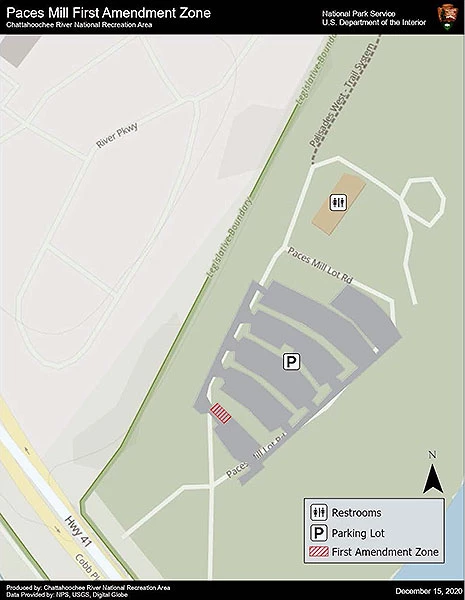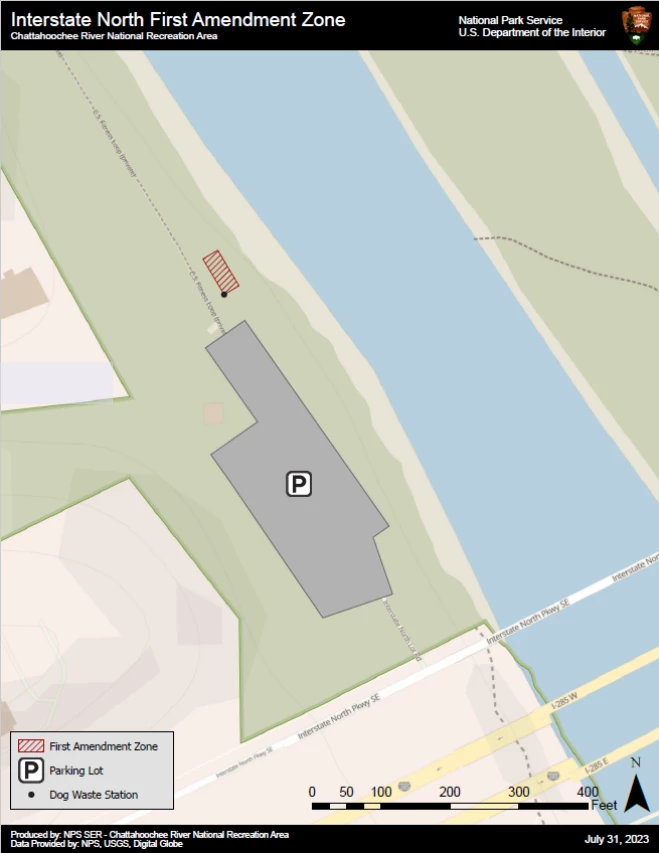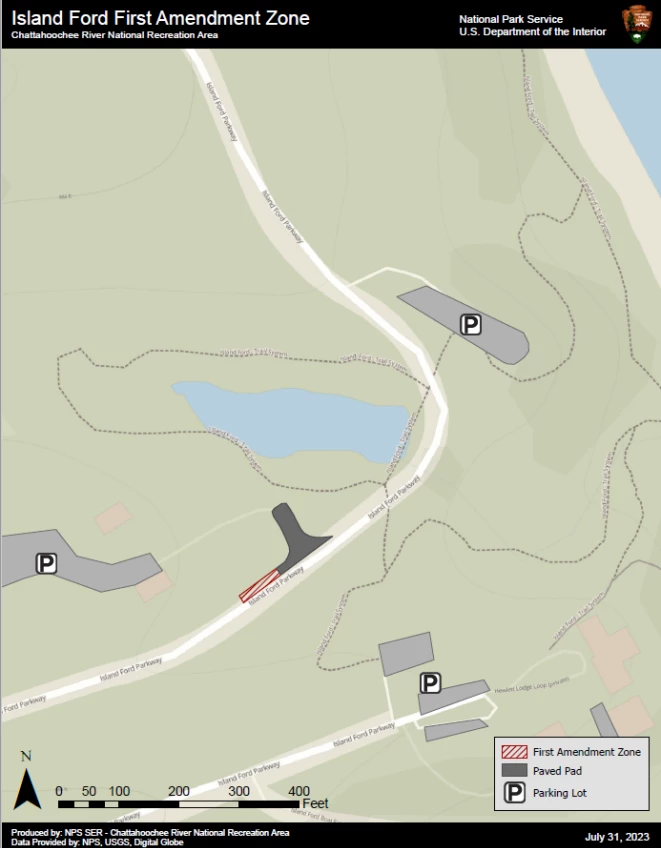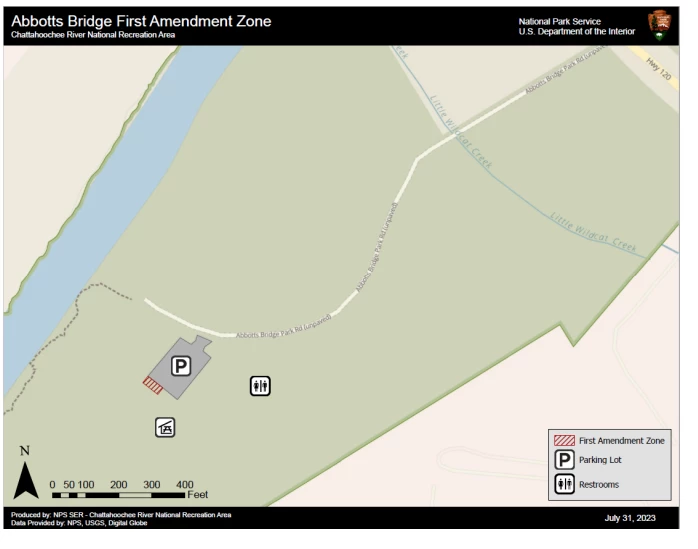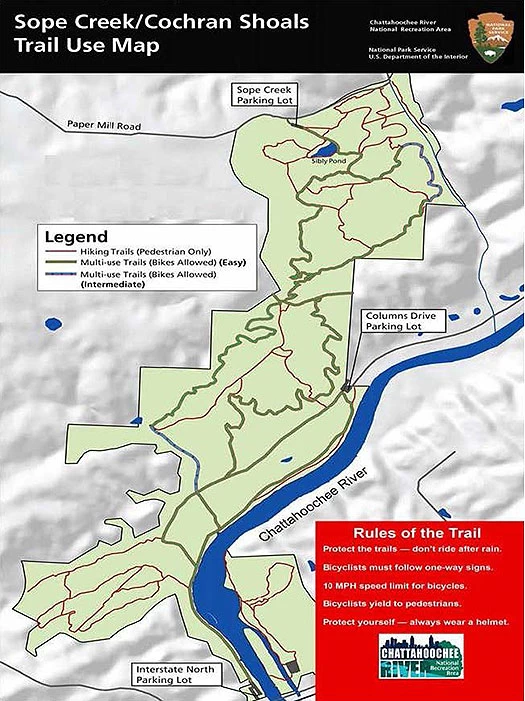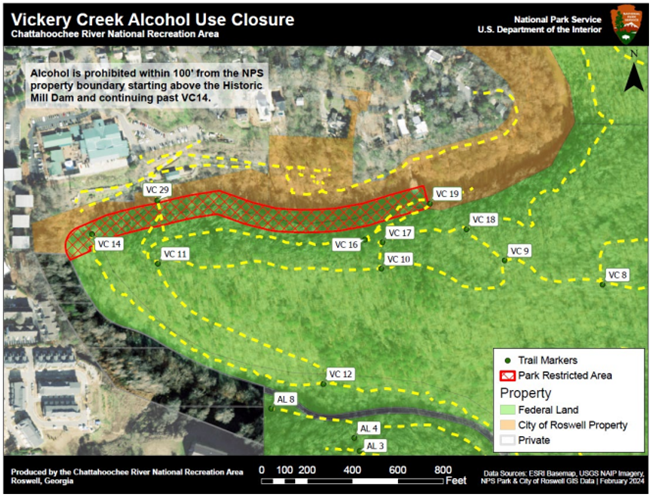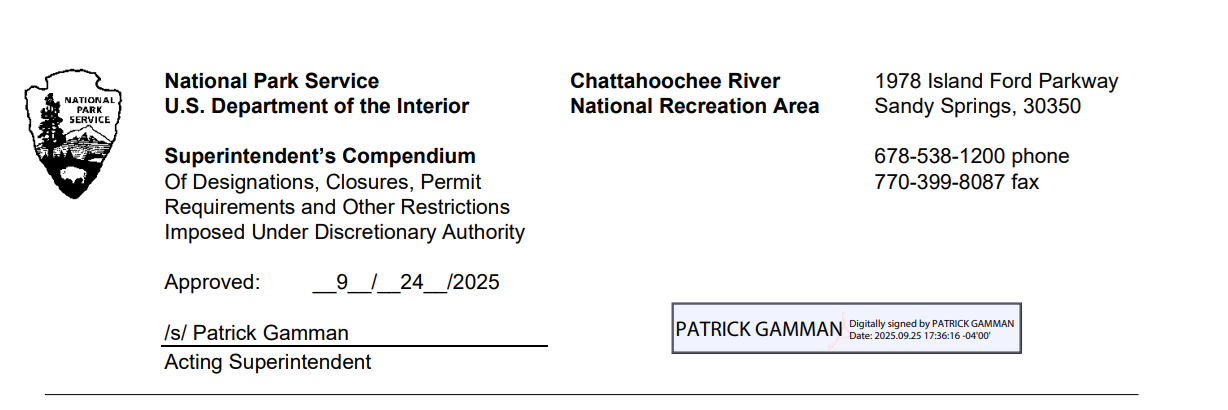
A. INTRODUCTION1. Superintendent’s Compendium Described The Superintendent’s Compendium is the summary of park specific rules implemented under 36 Code of Federal Regulations (36 CFR). It serves as public notice, identifies areas closed for public use, provides a list of activities requiring either a special use permit or reservation, and elaborates on public use and resource protection regulations pertaining specifically to the administration of the park. The Superintendent’s Compendium does not repeat regulations found in 36 CFR and other United States Code and CFR Titles, which are enforced without further elaboration at the park level. The regulations contained in 36 CFR, Parts 1-7, are the basic mechanism used by the National Park Service (NPS) to preserve and protect the natural and cultural resources of the park and to preserve and protect the natural and cultural resources of the park, manage visitor use, provide for visitor safety, and protect property within the park. Parts 1 through 6 are general regulations applicable to all areas of the national park system, and Part 7 contains special regulations specific to individual parks. Each of these parts has many sections and subsections articulating specific provisions. Within some of these Part 1-7 sections and subsections, the Superintendent is granted discretionary authority to develop local rules to be responsive to the needs of a specific park resource or activity, park plan, program, and/or special needs of the general public. As an example, 36 CFR 1.5(a) Closures and Public Use Limits provides the Superintendent certain discretion in allowing or prohibiting certain activities. The authority granted by the Section, however, requires the Superintendent to comply with the Administrative Procedures Act (6 USC Section 551), which requires public notice on actions with major impact on visitor use patterns, park resources, or those that are highly controversial in nature. Another example is 36 CFR 1.6 Permits, which allows the Superintendent to require a permit for certain uses and activities in the park. This Section, however, requires that a list of activities needing a permit (and a fee schedule for the various types of permits) be maintained by the park. A final example is 36 CFR 2.1(c) (1) Preservation of Natural, Cultural and Archeological Resources, which provides the Superintendent the authority to designate certain fruits, nuts, berries or unoccupied seashells which may be gathered by hand for personal use or consumption. This activity can occur, however, only if a written determination shows that the allowed activity does not adversely affect park wildlife, the reproductive potential of a plant species, or otherwise adversely affect park resources. This Compendium should be used in conjunction with Title 36 CFR, Parts 1-7, to more fully understand the regulations governing the use and enjoyment of all the areas of the national park system. A copy of Title 36, CFR, can be purchased from the U.S. Government Printing Office at: Superintendent of Documents The CFR is also available online at:
https://www.law.cornell.edu/cfr/text/36/chapter-I 2. Laws and Policies Allowing the Superintendent to Develop This Compendium The National Park Service (NPS) is granted broad statutory authority under 54 United States Code (U.S.C.) Section 1 et.seq. (Organic Act of 1954, as amended) to “…regulate the use of the Federal areas known as national parks, monuments, and reservations…by such means and measures as conform to the fundamental purposes of the said parks…which purpose is to conserve the scenery and the natural and historic objects and the wildlife therein and to provide for the enjoyment of the same in such manner and by such means as will leave them unimpaired for the enjoyment for future generations” (54 U.S.C. Section 1). In addition, the NPS Organic Act allows the NPS, through the Secretary of the Interior, to “make and publish such rules and regulations as he may deem necessary or proper for the use and management of the parks, monuments, and reservations under the jurisdiction of the National park Service” (54 U.S.C. Section 3). In 1970, Congress amended the NPS Organic Act to clarify its intentions as to the overall mission of the NPS. Through the General Authorities Act of 1970 (54 U.S.C. Sections 1a1-1a8), Congress brought all areas administered by the NPS into one national park system and directed the NPS to manage all areas under its administration consistent with the Organic Act of 1954. In 1978, Congress amended the General Authorities Act of 1970 and reasserted System-wide the high standard of protection defined in the original Organic Act by stating “Congress further reaffirms, declares, and directs that the promotion and regulation of the various areas of the national park system, as defined by Section 1 of this Title, shall be consistent with and founded in the purpose established by Section 1 of this Title, to the common benefit of all people of the United States.” 54 U.S.C. Section 1c defines the national park system as “…any areas of land and water now or hereafter administered by the Secretary of the Interior through the National Park Service for park, monument, historic, parkway, recreational, or other purposes.” In addition to the above statutory authority, the Superintendent is guided by established NPS policy as found in the NPS Management Policies (2006). The Superintendent is also guided by more specific policies promulgated by the Director, National Park Service, in the form of Director’s Orders. As stated in NPS Management Policies, the primary responsibility of the NPS is to protect and preserve our national natural and cultural resources while providing for the enjoyment of these resources by visitors and other users, as long as use does not impair specific park resources or overall visitor experience. The appropriateness of any particular visitor use or recreational experience is resource-based and will vary from park to park; therefore, a use or activity that is appropriate in one park area may not be appropriate in another. The Superintendent is directed to analyze overall park use and determine if any particular use is appropriate. 3. Consistency of This Compendium with Applicable Federal Law and Requirements The Superintendent’s Compendium is not considered a significant rule requiring review by the Office of Management and Budget under Executive Order 12866. In addition, this Compendium will not have a significant economic effect, nor impose a significant cost on any local, state or tribal government or private organization, and therefore does not fall under the requirements of either the Regulatory Flexibility Act or the Unfunded Mandates Reform Act. The actions and requirements described in this Compendium are found to be categorically excluded from further compliance with the procedural requirements of the National Environmental Policy Act (NEPA) in Department of the Interior (DOI) Guidelines 554 DM 6, and, as such, an Environmental Assessment will not be prepared. 4. Development of the Requirements of the Superintendent’s Compendium As outlined above, the NPS has broad authority and responsibility to determine what types of uses and activities are appropriate in any particular park or specific park area. The requirements of the Superintendent’s Compendium are developed through an analysis and determination process. The decision criteria used during this process are:
5. Applicability of the Compendium The rules contained in this Compendium apply to all persons entering, using, visiting or otherwise present on federally owned lands, including submerged lands, and waters administered by the NPS within the legislative boundaries of the park. This includes all waters subject to the jurisdiction of the United States, including all navigable waters. 6. Enforcement of Compendium Requirements NPS Law Enforcement Park Rangers and United States Park Police enforce the requirements of the United State Code, 36 CFR, and this Superintendent’s Compendium. 7. Penalties for Not Adhering to the Compendium Requirements A person who violates any provision of the regulations found in 36 CFR, Parts 1-7, or provisions of this Compendium, is subject to a fine as provided by law (18 U.S.C. 3571) up to $5,000 for individuals and $10,000 for organizations, or by imprisonment not exceeding six months (18 U.S.C. 3559), or both, and shall be adjudged to pay all court costs associated with any court proceedings. You may receive a list of fines associated with any particular provision by contacting the US Park Police or the park address. 8. Comments on the Compendium The Compendium is reviewed annually and revised as necessary. The park welcomes comments about its program and activities at any time. 9. Effective Date of the Superintendent Compendium The Superintendent’s Compendium is effective on the approval date listed on the first page of this document, and remains in effect until revised. 10. Additional Information Some of the terms used in this Compendium may have specific meaning defined in 36 CFR 1.4 Definitions. 11. Availability Copies of the Compendium are available at: Chattahoochee River National Recreation Area B. SUPERINTENDENT'S COMPENDIUMIn accordance with regulations and the delegated authority provided in Title 36, Code of Federal Regulations (“36 CFR”), Chapter 1, Parts 1-7, authorized by Title 54 United States Code, Section 100751, the following provisions apply to all lands and waters administered by the National Park Service, within the boundaries of Chattahoochee River National Recreation Area. Unless otherwise stated, these regulatory provisions apply in addition to the requirements contained in 36 CFR, Chapter 1, Parts 1-7. Written determinations, which explain the reasoning behind the Superintendent’s use of discretionary authority, as required by 36 CFR, Section 1.5(c), appear in this document identified by italicized print. 36 CFR §1.4 - DefinitionsThe term "park" means the waters of the Chattahoochee River, to the maximum extent of the high water mark (“bank-to-bank”), from Buford Dam to its confluence with Peachtree Creek and the land along it as defined in the park’s enabling legislation with revisions as indicated on authorized land maps. The term "unmanned aircraft" means a device that is used or intended to be used for flight in the air without the possibility of direct human intervention from within or on the device, and the associated operational elements and components that are required for the pilot or system operator in command to operate or control the device (such as cameras, sensors, communication links). This term includes all types of devices that meet this definition (e.g., model airplanes, quadcopters, drones) that are used for any purpose, including for recreation or commerce. The Term “Bicycle” means every device propelled solely by human power upon which a person or persons may ride on land, having one, two, or more wheels, except a manual wheelchair. The Term “Electric Bicycle” means a two- or three-wheeled cycle with fully operable pedals and an electric motor of not more than 750 watts that meets the requirements of one of the following three classes: (1) “Class 1 electric bicycle” shall mean an electric bicycle equipped with a motor that provides assistance only when the rider is pedaling, and that ceases to provide assistance when the bicycle reaches the speed of 20 miles per hour. (2) “Class 2 electric bicycle” shall mean an electric bicycle equipped with a motor that may be used exclusively to propel the bicycle, and that is not capable of providing assistance when the bicycle reaches the speed of 20 miles per hour. (3) “Class 3 electric bicycle” shall mean an electric bicycle equipped with a motor that provides assistance only when the rider is pedaling, and that ceases to provide assistance when the bicycle reaches the speed of 28 miles per hour. 36 CFR §1.5 - Visiting Hours, Public Use Limits, Closures, and Area Designations For Specific Use Or Activities(a)(1) The following visiting hours and public use limits are established for all or for the listed portions of the park, and the following closures are established for all or a portion of the park to all public use or to a certain use or activity: Park Hours - The park is closed to all visitor use during the hours of darkness, except under conditions of a permit issued by the Superintendent. Darkness is defined as thirty (30) minutes after local sunset to thirty (30) minutes before local sunrise. Hewlett Lodge Visitor Center Closure – The visitor center is closed to the public annually on Thanksgiving and Christmas Day. Justification: The park area contains no developed overnight accommodations, nor does it contain any facilities that are normally used at night. It is therefore felt that no legitimate public activity would be prevented by closing the park at night. The legislated purpose of the park would not normally be served by night use. Hewlett Lodge Large Conference Room is closed to public use. Justification: The Superintendent has determined that the public access to this area is closed due to monitoring capacity and interference with park operations. Motorized Vessels Closure - The following park waters are closed to motorized vessels all year:
A vessel with a motor is considered in compliance with the closure if the motor is removed from the transom, or other attachment point from which it is operated, and placed in the bottom or on the deck of the vessel. Justification: These prohibitions and restrictions are necessary for public safety and resource protection. Closure of Glass and Styrofoam Containers - The Chattahoochee River National Recreation Area is closed to glass beverage containers; the possession of glass beverage containers is prohibited except:
The restriction on glass beverage containers and Styrofoam is based on safety and environmental concerns. Glass containers are not appropriate at Chattahoochee River National Recreation Area, as the number of injuries related to this type of container continues to be an issue. Styrofoam does not break down and can be a problem for wildlife. Based on these concerns, the National Park Service has closed the above areas to glass and Styrofoam containers. Unmanned Aircraft, Rockets, Vessels and Vehicles Closure – The park, including airspace, is closed to the launching, landing, or operating of unmanned aircraft, rockets, vessels, vehicles or similar propelled devices. Launching, landing, or operating an unmanned aircraft, rocket, vessel, vehicle or similar propelled device from or on lands and waters administered by the National Park Service within the boundaries of Chattahoochee River NRA is prohibited except as approved in writing by the superintendent. Justification: Unmanaged or unrestricted recreational use of unmanned aircraft within Chattahoochee River National Recreation Area will conflict with, or impact, a variety of park uses including visitor experience of unimpaired viewsheds; the disturbance, displacement or harassment of park wildlife to include threatened and endangered species present potential for impacts or damage to sensitive thermal areas; creation of public safety hazards per operation near roadways or large aggregations of visitors, and visual or aural impacts to wilderness character and values within the park backcountry. Less restrictive measures were not considered sufficient due to the rapidly expanding and evolving use of UAs throughout the world. Section 1.5 of NPS Management Policies 2006 provide that a new form of park use may be allowed within a park only after a determination has been made by the park Superintendent that it will not result in unacceptable impacts on park resources and values. Trail Games Closure - The park is closed to the playing of hash house harrier games. The painting, flagging, or dropping of materials for the use of marking a trail or path is prohibited. Justification: This activity is prohibited based upon potential negative impacts on natural and cultural resources. The negative impacts of concern include: painting, flagging, or dropping of materials. Geocaching Closure - The park is closed to the establishment of geocaches. Justification: This is prohibited activity based upon potential negative impacts on natural and cultural resources. The negative impacts of concern include: digging holes to bury caches, manipulating vegetation and geological formations to conceal caches, and the creation of unauthorized social trails. Island Ford Administrative Areas Closure – The Island Ford Administrative areas are closed to public use. Non-employees doing business with the park may enter and remain in these areas when invited and escorted by park staff. Delivery company personnel may enter these areas when making deliveries or pick-ups. The following areas are closed:
Justification: This area is closed to public access to protect the privacy and security of park employees. Settles Bridge – The NPS portion of Settles Bridge structure is closed to public use.
Wearing of Masks While on Park Property: When the COVID-19 Community Level is LOW or MEDIUM in the county or all the counties where the park is located based on data provided by the Centers for Disease Control and Prevention (CDC), individuals are not required to wear masks. When the COVID-19 Community Level is HIGH in the county or all the counties where the park is located based on data provided by the CDC, all individuals over the age of two must wear masks, regardless of vaccination status, in all common areas and shared workspaces in buildings owned, leased, or otherwise controlled by the National Park Service, including, but not limited to, park visitor centers, administrative offices, lodges, gift shops and restaurants. When the COVID-19 Community Level is HIGH in one or more, but not all, of the counties where the park is located based on data provided by the CDC, the superintendent will determine whether individuals are required to wear masks. The requirement, if any, will apply to all facilities within the park. Masks must cover the nose and mouth and fit snugly around the nose and chin with no large gaps around the sides of the face. Masks not designed to be protective, masks with ventilation valves, and face shields do not meet the requirement. Regardless of the COVID-19 Community Level, individuals may wear masks if they choose to do so. Where a state, local, tribal, or territorial government where the park is located imposes more protective mask-wearing requirements than those indicated by the COVID-19 Community Level, individuals must follow those more protective requirements within the park. More protective state, local, tribal, or territorial mask-wearing requirements are hereby adopted as federal requirements in all units of the National Park System located within that state, locality, area subject to a federally recognized Indian tribe’s regulatory jurisdiction, or territory, regardless of a particular park’s jurisdictional status. Additionally, all individuals must wear masks in or on public transportation conveyances and transportation hubs/facilities, to the extent required by current orders or directives issued by the CDC, the Transportation Security Administration (TSA), or other federal agencies with jurisdiction over those conveyances or areas. As of March 4, 2022, CDC and TSA orders or directives require all individuals regardless of vaccination status to wear masks in indoor areas of all forms of public transportation conveyances, including busses, trains, and boats/ferries, and in the indoor premises of transportation hubs/facilities. Individuals are not required to wear masks while outdoors on conveyances or while outdoors on the premises of transportation hubs/facilities. Motorized Wheelchairs and Personal Transporters Motorized wheelchairs and other “power-driven mobility device" (OPDMD) personal transporters are allowed on trails where bicycle and E-Bikes are authorized when used by persons with mobility disabilities. Any OPDMD must abide by all laws pertaining to E-bikes. Personal Flotation Devices A wearable personal flotation device (PFD) must be worn at all times by each person boating, tubing, or wading in Chattahoochee River waters between 1) Buford Dam and the Highway 20 bridge; and 2) Morgan Falls Dam and the Morgan Falls boat ramp. Children under the age of 13 must wear a PFD when aboard a vessel that is under way in the Chattahoochee River or ponds, unless the child is within a fully enclosed cabin. On all other river sections in the park, a PFD is required for each person aboard a vessel or tube in the Chattahoochee River or ponds and highly recommended that it be worn. PFDs must be: Readily accessible to all occupants when not worn. In good and serviceable condition. Legibly marked with the US Coast Guard approved number. Appropriately sized for the occupants. Park Passes Park passes are available in digital and physical form. Drivers of vehicles that park in designated parking lots identified by entrance fee signs are required to purchase and properly display a daily or annual park pass if applicable. Digital Passes Daily and Annual Park digital passes are associated with the registration tag of each vehicle (one digital pass per vehicle), a separate digital Park pass must be purchased for each parked vehicle. Physical Passes Daily, Annual, Senior, Interagency, Access, Military, and 4th grade passes may be purchased and transferred from vehicle to vehicle. Physical passes must be displayed hung from the rear-view mirror facing the windshield, displayed on the dashboard in a visible outward facing state, or taped to the inside of the windshield. An annual park pass internet sales receipt is valid for 10 days when displayed on the dash of the vehicle. Other annual park pass receipts are not sufficient and do not satisfy the display requirement of this section. River Watercraft Access All vessels, including tubes, rafts, canoes, kayaks, and paddleboards, may only access the river at public access launch ramps. These ramps are located at:
36 CFR §1.6 - Activities That Require A PermitSpecial Use Permit Limits Special Use Permits may be issued no earlier than one year prior to the start of the permit. No one organization or group may reserve the same area more than three (3) consecutive weekends or nine consecutive days in any thirty (30) day period.
36 CFR §2.1 – Preservation of Natural, Cultural, and Archaeological Resources(c)(1) The gathering, by hand, of native and non-native fruits, berries and nuts for personal use or consumption is allowed. Each gatherer is allowed one (1) gallon per day. Sale or commercial use of gathered fruits, berries and nuts from Chattahoochee River National Recreation Area is strictly prohibited. Gathering of plants or mushrooms is strictly prohibited, unless authorized by permit.
(c)(2)(ii) The use of ladders or climbing of vegetation is prohibited while gathering native and non-native fruits, berries and nuts. All collections must be accomplished while within reach of the ground. 36 CFR §2.2 – Wildlife Protection(d) It is prohibited to transport lawfully or unlawfully taken wildlife with the exception of lawfully fish and as outlined below.
Lawfully taken wildlife outside of the park that escapes in to the park may be pursued and retrieved only when first receiving permission from the Chief Ranger. Persons pursuing or retrieving lawfully taken wildlife may not bring weapons as defined in 36 CFR into the park. Lawfully taken wildlife may be transported on state and county roadways without obtaining permission or a permit from the Superintendent. (e) The park is closed to the viewing of wildlife with an artificial light. 36 CFR §2.10 – Camping and Food Storage(a) A permit is required from the Superintendent in order to camp overnight.
36 CFR §2.13 – Fire36 CFR 2.13(a)(1) – Conditions on Lighting or Maintaining a Fire
1. Prohibits lighting or maintaining a fire, except in designated areas or receptacles and under conditions that may be established by the superintendent. This Memorandum does not apply to the use of stoves which are governed separately from fires, primarily in 36 CFR 2.13(a)(2). 2. The superintendent’s compendium is a written compilation of all the designations, closures, permit requirements and other restrictions imposed by the superintendent under discretionary authority. 36 CFR 1.7(b). Superintendents should create a compendium with the language required by this Memorandum if one does not exist. 3. The issuance of this Memorandum falls within the categorical exclusion stated in 43 CFR 4.6210(i) for policies, regulations, and guidelines that are of an administrative, financial, legal, technical, or procedural nature; or whose environmental effects are too broad, speculative, or conjectural to lend themselves to meaningful analysis and will later be subject to the NEPA process, either collectively or case-by-case. 36 CFR 2.13(a)(b) Fires shall be extinguished upon termination of use to the extent that no hot coals, ash or burnt materials remain. Cold coals, ash and burnt materials shall be deposited in metal trash receptacles or removed from the park. 36 CFR §2.14 – Sanitation and Refuse(a)(8) In developed and front country areas, human body waste may only be disposed of in restroom toilet and urinal fixtures designed for that purpose.
| ||||||||||||||||
Last updated: October 1, 2025

